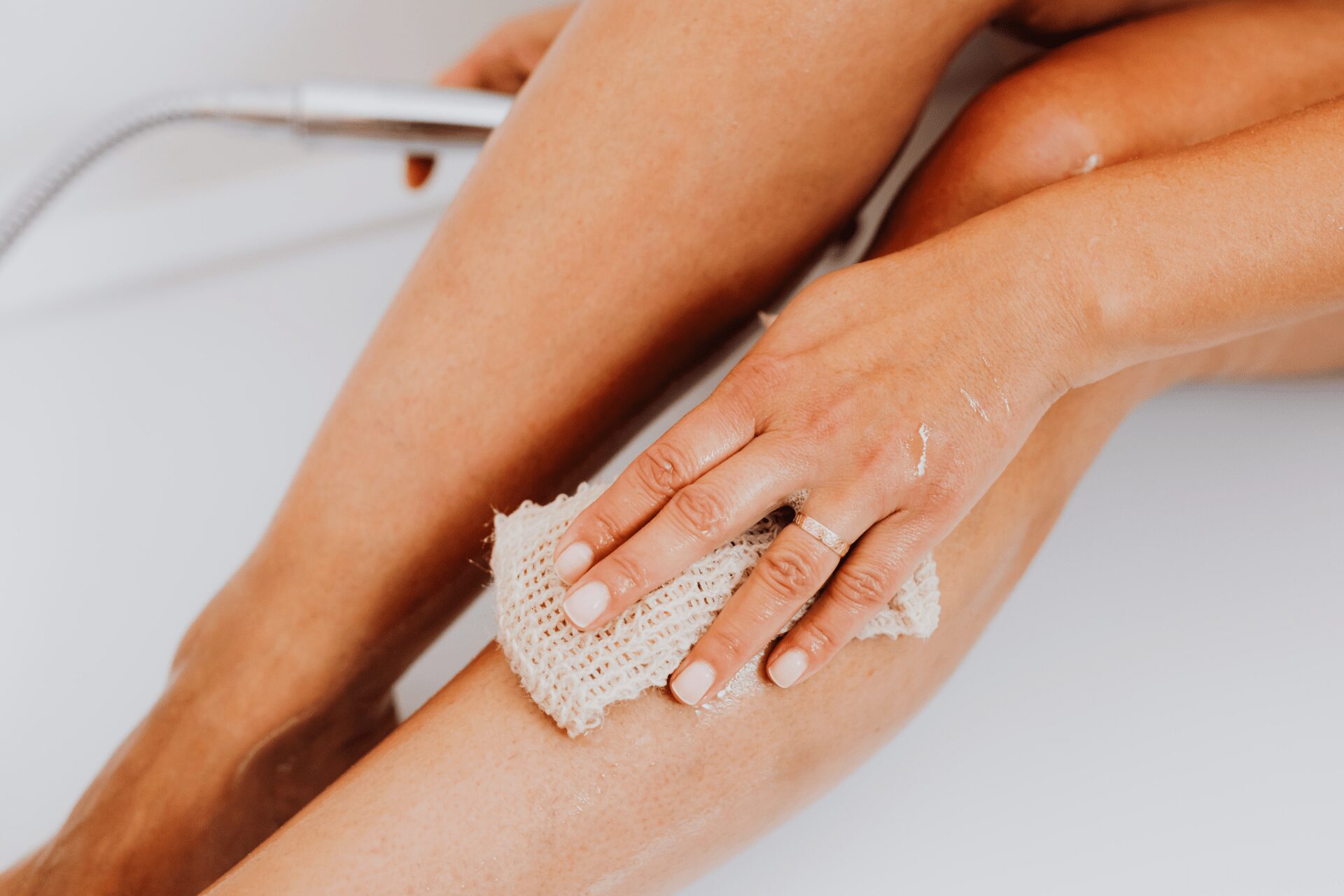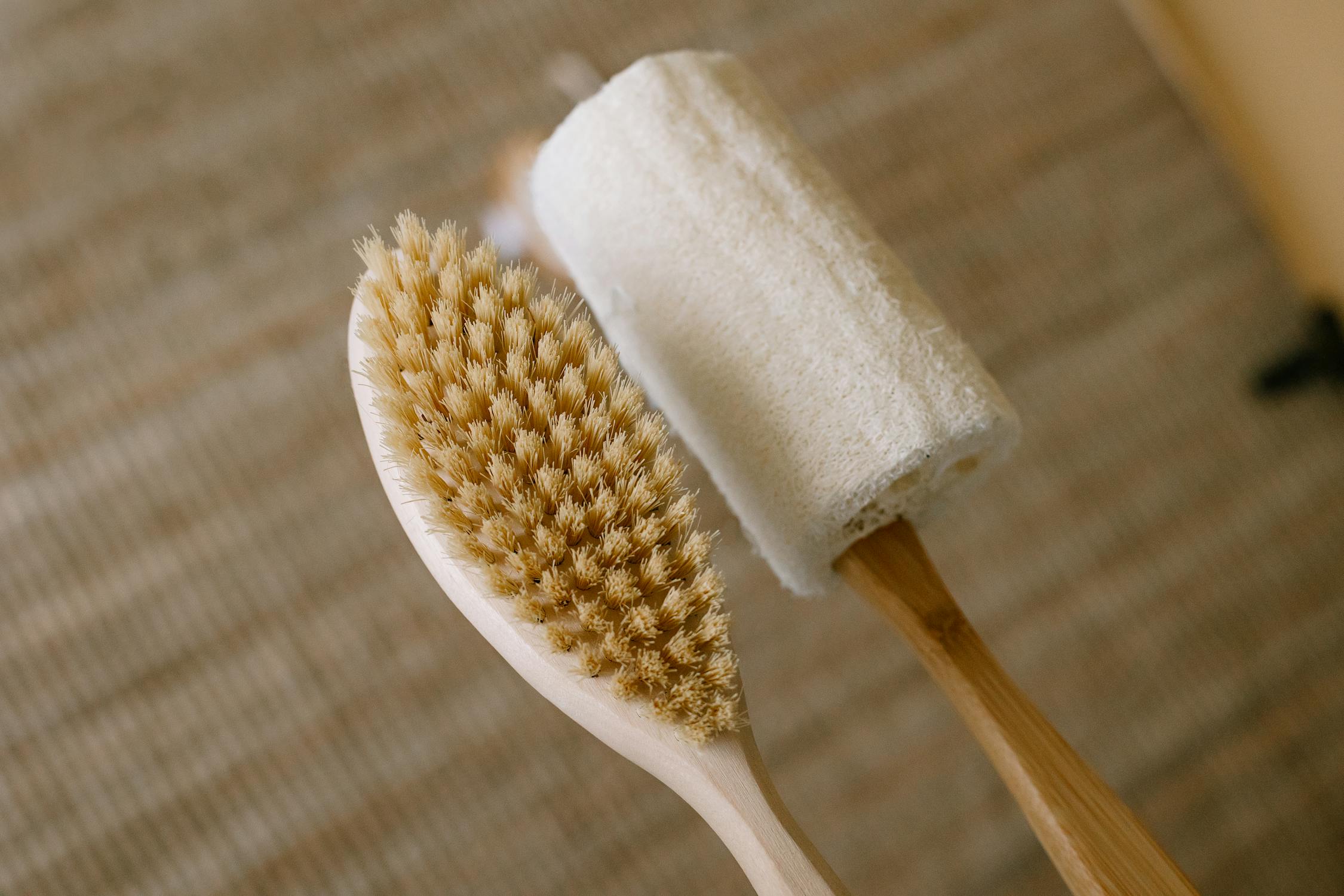
Body + Mind is reader-supported. We may earn an affiliate commission when you buy through some of the links on our site.
Exfoliation is like giving your skin a fresh makeover — shedding dead skin cells to make way for new ones. It has many benefits, such as providing your skin an instant glow. However, if not done correctly, it could cause damage to your skin.
Ready to embrace a more radiant complexion? Discover everything you need to know about exfoliation and how to exfoliate properly with these actionable tips.
This process refers to removing dead surface cells on the outer layer of your skin with the help of tools and substances. While these cells normally would shed off on their own, an exfoliant can help clear them sooner to make way for radiant, smooth-looking skin.

Your skin is in a constant state of repairing and replacing itself. Due to these processes, your outer layer can have layers of dead skin all over your body. Here are the benefits of exfoliating:

There are two main methods of exfoliating skin: physical or manual and chemical exfoliation.
This method uses tools like a brush, sponge, glove and scrub. It entails scrubbing the skin and using beaded products. The downside of manual exfoliators is that people can scrub too much, which may lead to irritation and skin barrier damage.
This method utilizes chemicals to dissolve dead skin cells. Chemical products are less likely to cause irritation than physical exfoliants, making them ideal for sensitive skin. Brushing and scrubbing are unnecessary when it comes to this method. Here are the most common types of chemical exfoliators:
Alpha-Hydroxy Acids (AHAs)
These are among the most popular types of light chemical peels. AHAs break apart bonds that hold dead skin cells on the top of your skin. Ingredients such as glycolic, lactic and citric acids fall into the AHA family.
Beta-Hydroxy Acids (BHAs)
These acids work on the outermost layer of the skin, lifting dead skin away. It can also penetrate pores to exfoliate the lining and help reduce the appearance of fine lines and wrinkles. The most common types of BHAs include salicylic and beta-hydroxybutanoic acids.
Knowing your skin type is the first step in understanding how to exfoliate properly. Remember that this can change with weather changes, age and lifestyle. Every method of exfoliation might not work for some skin types, so this step is crucial.

Now that you know the different exfoliation methods and your skin type, familiarize yourself with the proper ways of exfoliating your skin.
When you have dry, sensitive or acne-prone skin, opt for gentler options like chemical exfoliators. Physical and chemical methods will work if you have oily, thicker skin. Avoid treatments with strong chemical contents if you have a darker skin tone since it may result in dark spots.
When you have an acne breakout, you can still exfoliate using over-the-counter chemical exfoliants that contain salicylic acid. Avoid using physical exfoliants as they can do more harm than good, irritating skin and worsening the problem.
Using products with harsh chemicals and exfoliating too often can lead to redness, dryness and irritation. For instance, your skin might peel and burn if you go overboard with salicylic acid. In worse cases, irritation may require hospitalization in the event of severe skin damage.
When you exfoliate too vigorously, it may leave your skin more sensitive to sun and pollutants. As the largest organ in your body, the skin’s job is to protect your body from harmful matters in the environment.
Use a moisturizer that fits your skin type. Exfoliating can leave the skin dry, so moisturize to keep your skin plump and healthy. Remember that hydration is essential so your skin can repair and protect itself from harmful forces.
In the morning, always wear sunscreen, whether it’s raining or cloudy, especially if you’re going outside. Exposure to the sun can cause premature aging and irritation. Protection from UV rays is more crucial after exfoliating, as your skin is most sensitive.
After giving your skin its well-deserved exfoliation, give it enough time to recover and repair itself. This moment is crucial because physical and chemical exfoliants can be too much for the skin.
Only exfoliate once or twice a week. Doing this more frequently and vigorously can result in redness, increased breakouts and stinging.
Now that you’ve learned the ins and outs of proper exfoliation, you’re on your way to a more radiant complexion. Whether you choose physical or chemical exfoliants, make this skincare step a non-negotiable in your routine.
Your email address will only be used to send you our newsletter, and at any time you may unsubscribe. For more information, see our Privacy Policy.